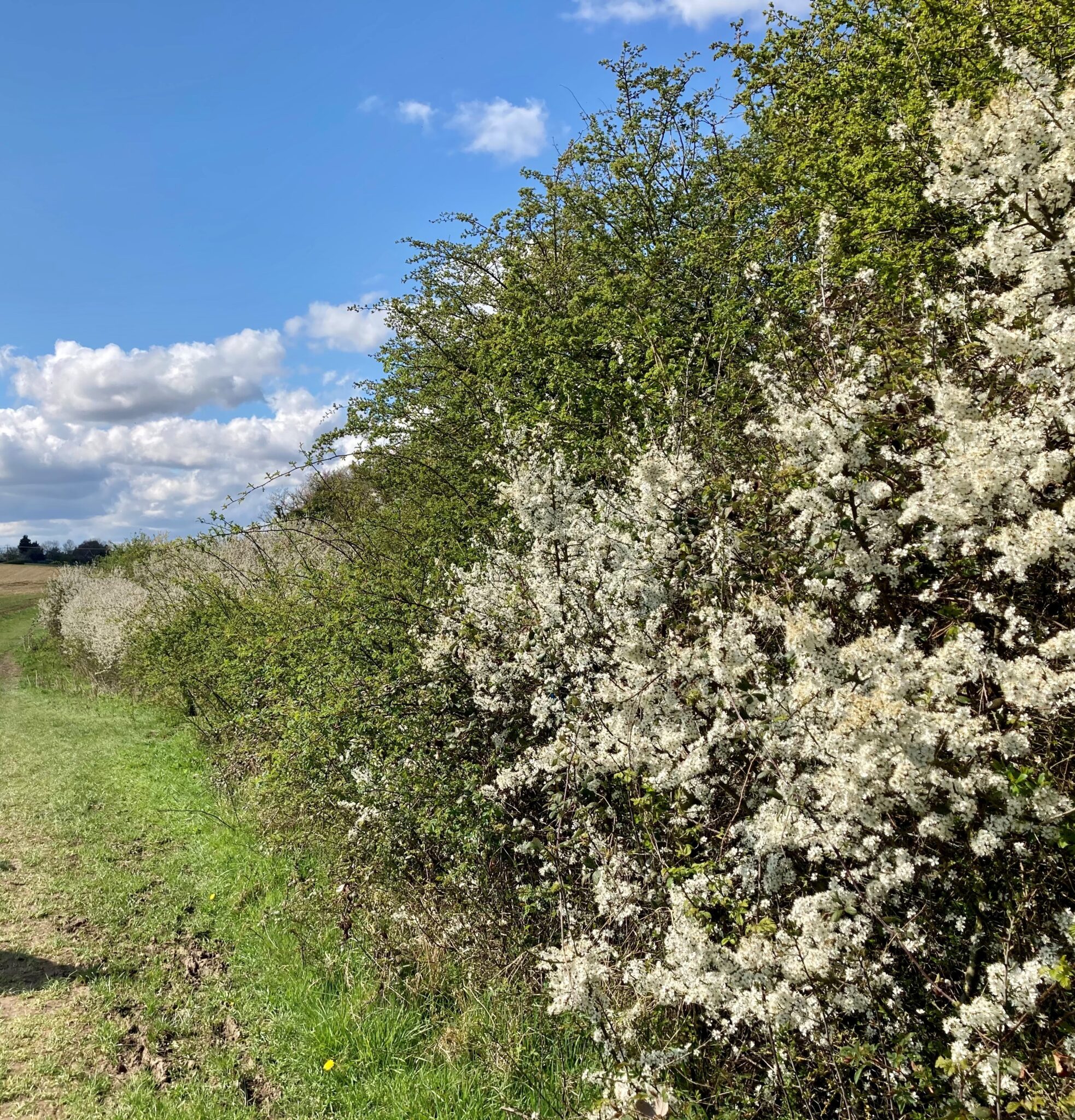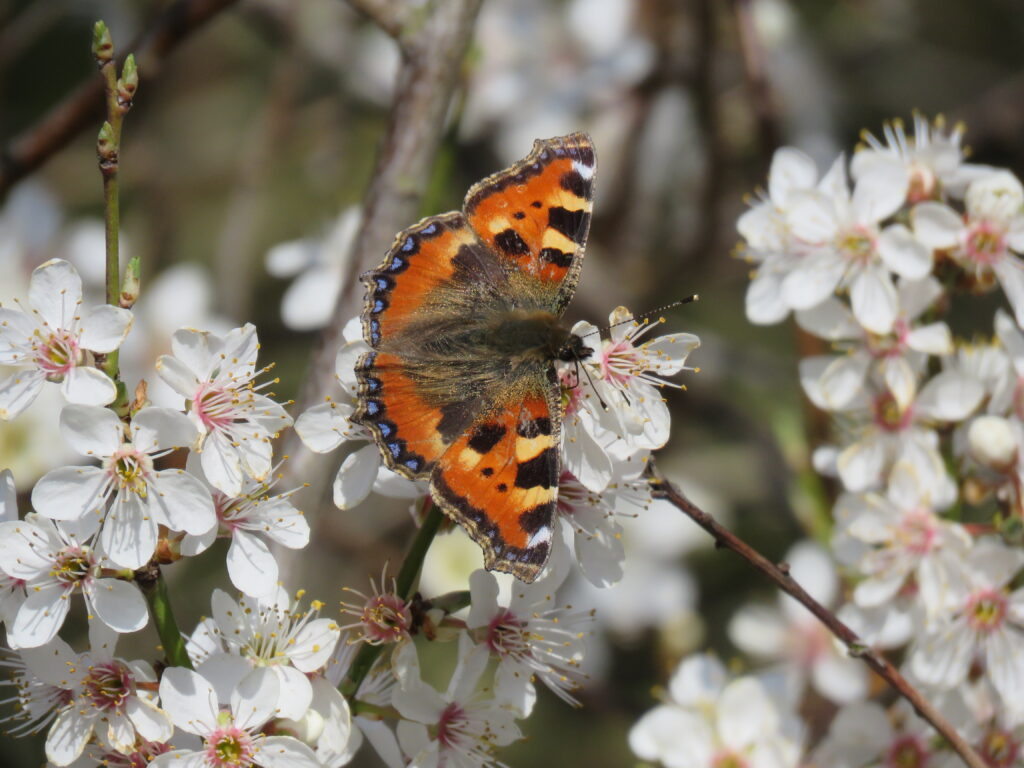
Author: Steven Falk, entomologist, ecologist and artist
It’s easy to be dismissive of insects, yet about one-third of all the food we consume has required a pollinator to put it there, and by pollinator, I don’t just mean Honey Bees. Nearly one-quarter of Britain’s 24,000 insect species visit flowers and wild bees, hoverflies and moths are especially important. Even the dungflies that sit on cowpats and the blowflies that develop in carrion pollinate flowers. In fact, some research has suggested that Honey Bees only do about one-third of Britain’s crop pollination.
Farmland provides a variety of broad habitats and more specialised microhabitats that support pollinators and help sustain pollinator abundance and diversity within the British countryside. Hedges and the many microhabitats that they support are especially important, so the way you manage them, or establish new ones, is crucial.

So how do pollinators use, or benefit from, a hedge system?
There are five broad ways:
- As a source of blossoms and flowers for adult foraging.
- As a source of many larval habitats.
- As a windbreak that aid pollinator activity and movement.
- As a source of shade and humidity, especially during droughts and heatwaves.
- As a component of a larger, interacting, landscape-scale habitat mosaic.
Hedge blossoms are crucially important in early and mid spring before other flowers have got going, and I’m always keen to promote the concept of a ‘good blossom sequence’. A simple blossom sequence might just entail Blackthorn (peaking mid April) and Hawthorn (peaking mid May). But if further blossoming species can be added to a hedge network, this can provide a longer and more continuous source of pollen and nectar. This could include Cherry Plum, Goat Willow and Common Gorse (which peak before Blackthorn), Field Maple and Crab Apple (which peak between Blackthorn and Hawthorn), and Guelder Rose, Dogwood and Elder (which peak after Hawthorn). The choice can be shaped around location and soil type and can be arranged at a farm unit level – I’m not advocating all those species in one hedge! But bear in mind that an abundance of spring blossom will help ensure you see more bumblebees, hoverflies and butterflies in summer.
Blossoming hedge trees such as Sycamore, Wild Cherry, willows or outgrown Field Maples or Crab Apples can add to that blossom offer. Hedge trees of all sorts (including Ash and Oak) can also provide an important larval habitat for pollinators. The foliage can be a food source for herbivorous butterflies and moths. Heart rot and aerial rot holes are the breeding sites for various hoverflies, and any dead limbs or dead trunks in the sun can be a breeding site for a variety of solitary bees and wasps, including the Red Mason Bee – a fabulous pollinator of fruit trees.

Further crucial hedge microhabitats for pollinators are hedge banks, hedge ditches and hedge margins. Hedge banks (which can be very ancient) will often support large nesting aggregations of mining bees. These can be very important pollinators of fruit trees and Oilseed Rape. Abandoned mouse and vole burrows in banks are important nesting sites for bumblebees. Water-filled hedge ditches can be a breeding site for a variety of hoverflies and also double up as very flowery features, often supporting an abundance of Meadowsweet, Great Willowherb, Yellow Iris, etc. Even where no ditches are present, the margins of hedges can provide a useful source of flowers such as brambles, Cow Parsley, Hogweed, thistles, Hedge Woundwort, and White Dead-nettle. That becomes enhanced if you have a decent buffer strip between the hedge and any crop, or a fence that stops stock grazing right up to the hedge.
The final benefit of hedges, which is all-too-often overlooked is their value as windbreaks. Pollinators don’t like strong breezes. Hedges help create pockets of calmer, warmer air that helps pollinator movement and activity. On a cool, breezy spring day of perhaps 10 °C, a sheltered, sunny edge of a field with Blackthorn blossom might be reaching 15 °C and supporting huge amounts for pollinator activity. Warm microclimates are also important for the development of herbivorous larvae such as caterpillars and the nesting activity of bees. Hedges play a crucial role in shaping microclimates and therefore pollinator activity.
So what can you do?
There is so much – but if I had to recommend just three things, they would be:
- Enhance your hedge blossom sequences – check what is currently there and consider what extra things could be added that enhance the blossom sequence, especially prior to the Blackthorn peak (given that warm weather increasingly starts in late winter).
- Cut your hedges on a 3-4 year rotation (i.e. one-third or one-quarter each year) because less frequently cut hedges produce more blossom, become structurally more diverse, and produce better microclimates (including valuable humid-shaded microclimates within them or on their shaded sides as well as the warm ones on their sunny sides).
- Allow flowery hedge margins to develop – encourage those lovely shows of Cow Parsley, Hogweed, Teasel etc. and embrace some limited Bramble, thistles and ragworts. Don’t cut these areas whilst they are still flowery, and don’t feel you need to sow an artificial pollen and nectar mix here if nature is already producing a nice range of flowers.
This is a summary of a very big subject. But I hope it is useful.
Steven Falk is an entomologist, ecologist, and artist specialising in pollinators http://www.stevenfalk.co.uk/help-our-bees.
All images are credited to Steven Falk.
TOMORROW
IS GROWN FROM OUR ACTIONS TODAY
Contact us today to find out how you can become part of the solution.
Register Interest
Sidebar form
or email us at fairtonature@rspb.org.uk
